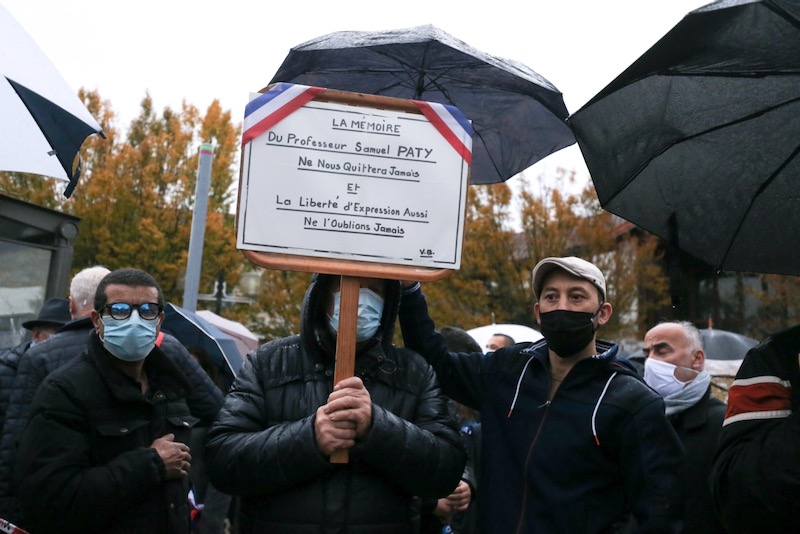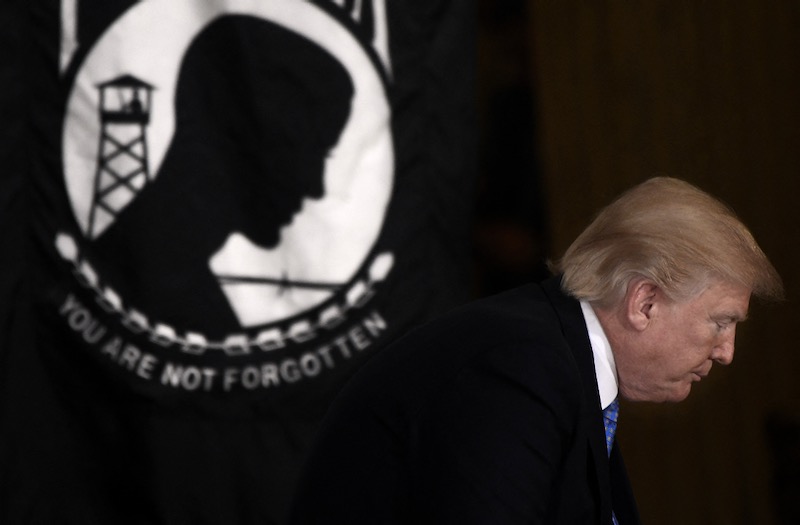The US presidential election is upon us and the world holds its breath. For months, the news media on both sides of the Atlantic has been dominated by prognostications about the possible outcome, the candidates’ – or to be more specific, Donald Trump’s – suitability for high office and their pitches to the US electorate, the opaqueness of campaign finances, the murky meddling of malign foreign powers and the nightmare scenario of a delayed, contested result. We’re told it’s an election like no other.
I beg to differ: many of the factors and scenarios related to the 2020 US election have parallels in the events surrounding the election of monastic presidents (the nerdy shorthand for abbots and abbesses, priors and prioresses) in medieval England.
Rather than occurring at set intervals, these ballots took place after the death or resignation of the incumbent. They were a crunch time for any monastery. The considerable powers vested in monastic presidents meant that it was important for monks and nuns to reach the right decision and elect the person most qualified and best suited to the role.
The Lateran Council, a great meeting of the Church in 1215, decreed there were three essential qualifications for election as a monastic superior: learning, holiness of life and “sufficient age”. But the definition of each of these criteria was open to debate, leading to inevitable wrangling among monastic communities about the merits of potential candidates.
Scholarship was certainly esteemed. In the mid-fifteenth century, John Greenwell, a monk of Fountains Abbey, was elected as abbot of Vaudey, even though he was still a student at Oxford where he was reading for a higher degree. But worldly experience also counted. The superior was the legal personification of his or her monastery, its representative in the wider world.
In 1392, Thomas Overton was elected to the abbacy of Crowland because he was “well tested by experience, while holding the higher offices of the monastery”. It took time to work your way up the monastic office-holding hierarchy, meaning that monks and nuns were usually well into middle age before their election as head of house. By and large, talent was esteemed over birth. Most abbots and priors came from families of “middling” status. Monasteries could even be avenues of social mobility. The St Albans monk Richard of Wallingford was the son of a blacksmith. In 1327, he was elected abbot of his monastery, his high ecclesiastical office accompanied by a seat in the House of Lords. Nuns were usually quite posh, but abbesses and prioresses frequently enjoyed much more responsibility and authority than their married aristocratic kinswomen.
As regards the actual process for choosing a new superior, the Lateran Council offered three possibilities. The first option resembled an election as we would understand it. Each member of the community (in other words, every monk or nun who’d taken their full vows) would cast a secret ballot for their preferred choice, the candidate with the most votes winning. The second option, the so-called “way of compromise”, involved the appointment of a few senior members of the community who would reach a decision on behalf of their brothers or sisters. The third alternative was “the way of the Holy Spirit” – the clue’s in the name. The entire community would be moved by the divine power of the Holy Spirit to unanimously acclaim their enthusiastic support for a single candidate.
Elections were indeed solemn events, each stage punctuated by communal and individual prayer. Church law strictly forbade campaigning. It happened nevertheless, and candidates weren’t above making populist pitches to their communities, telling their brothers or sisters exactly what they wanted to hear. In 1396, John de la Moore was elected as abbot of St Albans after promising to allocate his brethren a larger slice of the monastery’s enormous income to fund improvements in their food, drink, apparel and lodging.
Then as now, elections could involve eye-watering expenditure. Close to £1000 (well over £1 million in today’s values) was needed to settle the bill for legal fees, travel and hospitality that accompanyed the elevation of Michael de Pecham to the abbacy of St Augustine’s, Canterbury, in 1375.
About 10,000 elections to choose monastic superiors took place between 1300 and Henry VIII’s Dissolution of the Monasteries in the late 1530s. The vast majority passed off without incident or scandal, but there were exceptions. Stalemate at Meaux Abbey, near Hull, led to the exasperated abbot of Kirkstall, who was overseeing the election process, threatening to impose himself on the community as its abbot. His intervention worked, the Meaux monks quickly finding a candidate they could agree upon. A dispute at Fountains Abbey in the early fifteenth century was much more serious, ultimately leading to thirteen monks leaving the monastery and wandering around the Yorkshire countryside, where they resorted to outlawry while continuing to press the claim of their preferred candidate. The sorry affair rumbled on for years, ravaging the monastery’s finances and reputation in equal measure.
Disputes of this kind, or protracted election procedures, provided the ideal opportunity for so-called “rapacious wolves” to make a quick buck at the expense of a monastery. There were several instances of avaricious neighbours indulging in a bit of cattle rustling or illegally appropriating monastic lands. The monasteries themselves weren’t above behaviour of this sort. In 1283 the monks at Canterbury Cathedral Priory seized the chance provided by a vacancy at St Augustine’s Abbey to construct a quay on their neighbour’s property in the town of Fordwich. Local bigwigs would sometimes offer cash inducements to advance the case of their preferred candidate and Thomas Cromwell and Henry VIII directly intervened into the affairs of numerous monasteries, often with threats and menace, to ensure that compliant monks, sympathetic to their Reformation agenda, were elected when vacancies occurred.
It was not unknown for election results to be challenged, even overturned by the ecclesiastical authorities. Common reasons included irregularities in procedure or a dumbfounded prelate refusing to confer his benediction on a manifestly unsuitable candidate. It’s therefore hardly surprising that monasteries fastidiously documented their elections to minimise the chances of this happening.
Even when everything was above board and a suitably qualified candidate elected, it could still take months for the outcome to be formally ratified. The great Benedictine abbey of Bury St Edmunds was subject only to the Pope. Its abbots-elect therefore had to make a return journey to Rome lasting six months or longer to receive the blessing of the Pontiff. We can but hope and pray that Tuesday’s election yields a fair, unambiguous, peaceful and speedy result.



 Loading ...
Loading ...
What do you think?
You can post as a subscriber user ...
User comments (0)